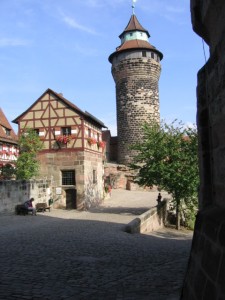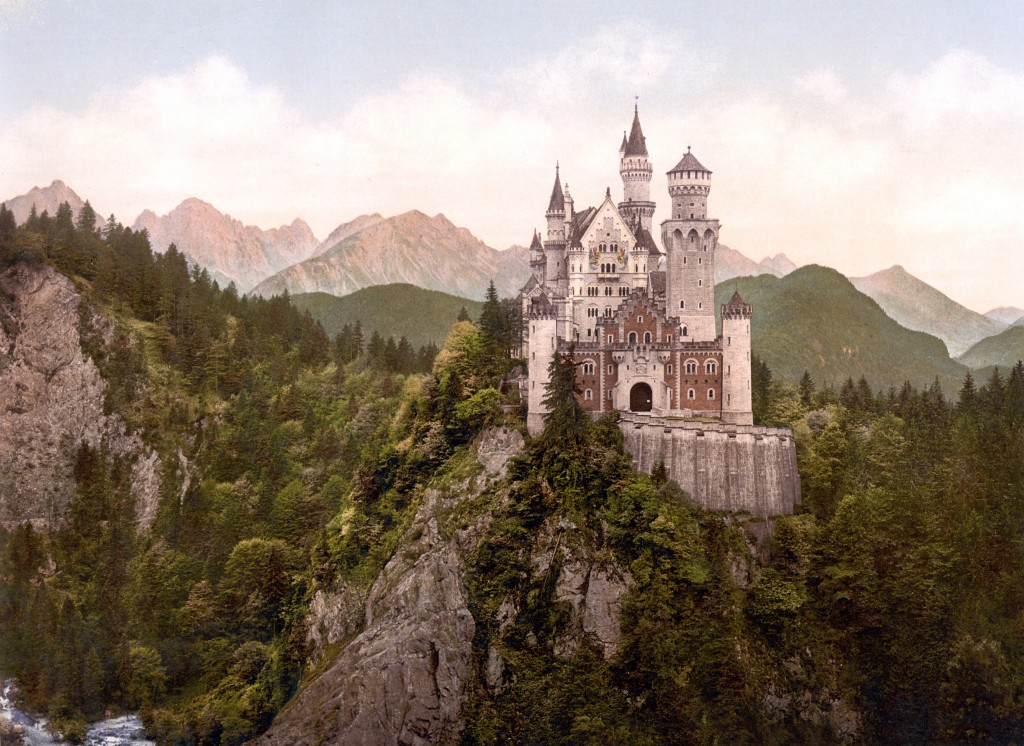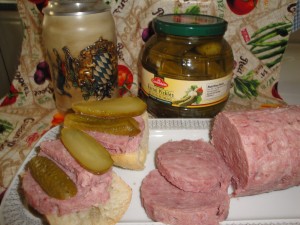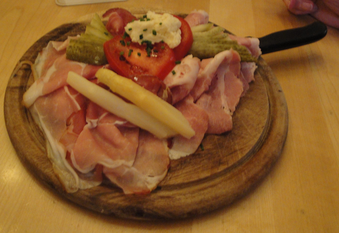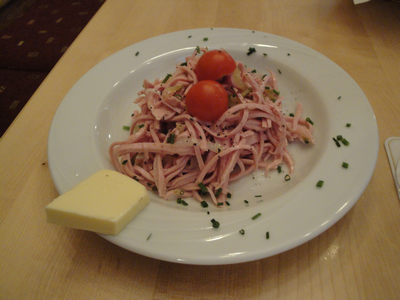Hundreds of castles and ruins are located all over Bavaria and here we show you the selection of the castles we think you should not miss if you are close by. With some their appearance and setting is very impressive, others their historical value and others again the collections which now are housed in their museums. To keep the explanations short we include links to websites about these castles, if you would like to know more about them.
- Neuschwanstein: Probably the most famous and if you include it in a visit you will realize why it is also one of, if not, the most visited castle in the world. As castles go it was build quite recently by King Ludwig II. The historical significance is that, as one of his three extraordinary building projects which almost bankrupted Bavaria, they turned into Bavaria’s largest touristic moneymakers in recent times. Well worth mentioning here is the Castle over on the next hill:
- Hohenschwangau: The castle build by Ludwig’s father is right across from Neuschwanstein.
- Veste Coburg: Considered to be one of the largest and best preserved fortresses in Germany. It had significant influence in the European history during the reign of Francis, Duke of Saxe-Coburg-Saalfeld, the link is to his Wikipedia page which describes how he “positioned” his kids and grand-kids into important positions all over Europe and even as far away as Mexico. Just roaming around the battlements is very impressive and it is also home to 3 very noteworthy museums.
- Nuremberg Imperial Castle: Archeological finds at this site go way back to the first century, but the first mention of a castle there was not until 1105 AD. It was a very important residence for the emperors of the “Holy Roman Empire” and through this received the “imperial” in the name. Well worth the steep walk up to it.
- Plassenburg Kulmbach: High above the city of Kulmbach is the Plassenburg. The castle itself is considered to be one of the most impressive castles in Bavaria and home to a very extensive collection of tin soldiers and figurines, set up in historic battle scenes and also numerous displays of diverse historical events from around the world. During our visits in Kulmbach re-exploring this museum is usually on our agenda.
- Fortress Marienberg: Wuerzburg, in the heart of the wine country along the river Main, is a very important part of the “Franken’s” influence in and history of this region. The fortress was almost destroyed in 1945 and the reconstruction was completed in 1990. It houses a museum documenting the history of the fortress and town.
- Veste Rosenberg: Kronach’s guardian is a very important castle as it is almost completely in original condition. Alone the fortifications itself are worth exploring. The castle is also home to an art museum and an outdoor theater featuring the annual Goethe’s Faust festival.
- Prunn Castle: Riedenburg (Altmühltal) Just look around the area and the location of the fortress and you probably can see why we included this fine castle.
- Burg Burghausen: We have to include this castle which is the longest in the world according to the “Guinness Book of World Records”.
- Burg Lauenstein: This castle is very memorable to me as it was the goal of quite a few of our family’s Sunday’s outings when I grew up. Sitting in the beer garden on Sunday, savoring our afternoon coffee and cake and enjoying the excellent view, made you feel like being part of the nobility which owned this castle in years gone by. Friends of ours fondly remember a stay in this castle’s hotel during their Bavarian Castle Tour a few years ago. In nearby Ludwigstadt the chocolate truffles manufacturer by the same name will give you a glimpse of how their delicious treats are made and a chance to buy direct from their factory outlet.
The entrance fee to many of these castles included above are part of the 14 Day Pass written about in one of our previous posts and, if you really are into visiting castles, can save you quite a bit of money.
One more time, the castles and ruins in Bavaria are numerous and our list represents my opinion. We will do a Top 10 list of palaces and mansions in the near future. We found an extensive list of Bavarian castles and palaces on the German Wikipedia listed by the “7 Regierungsbezirks” which are the 7 Bavarian regions with their own local government and sub divided into a “Landkreis” (county), but the page is in the German language.



